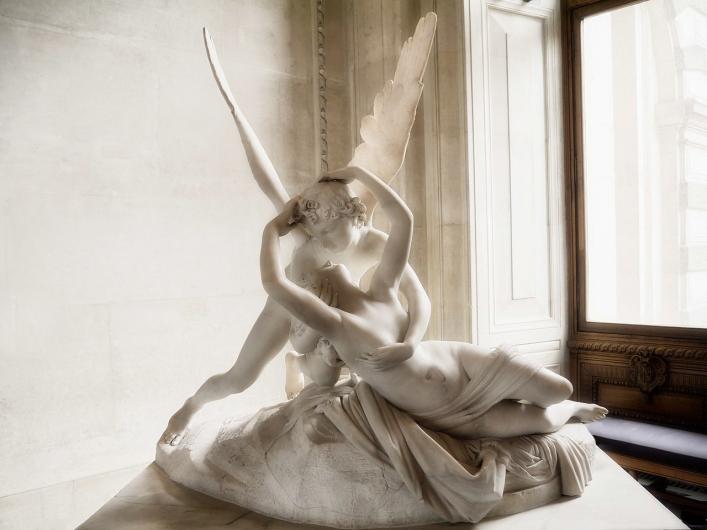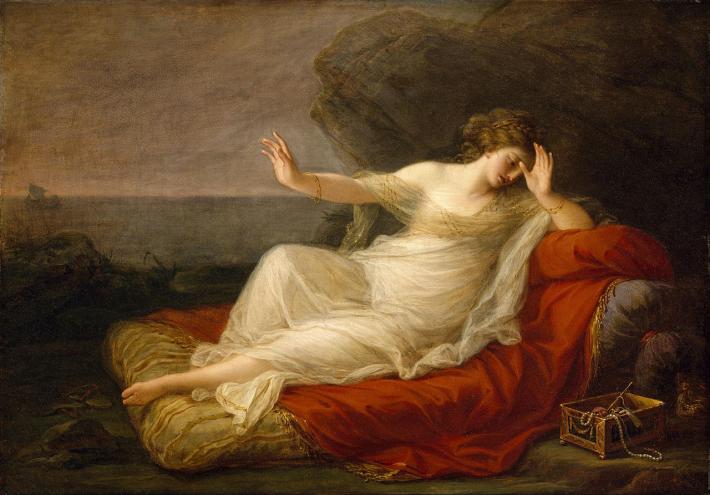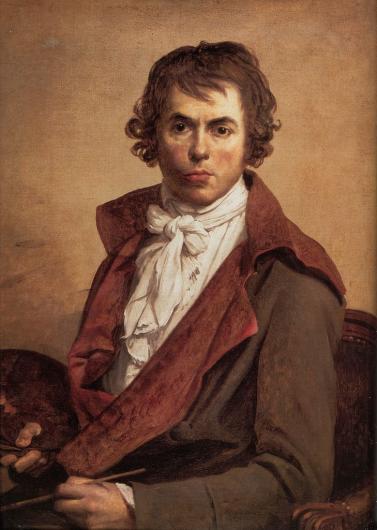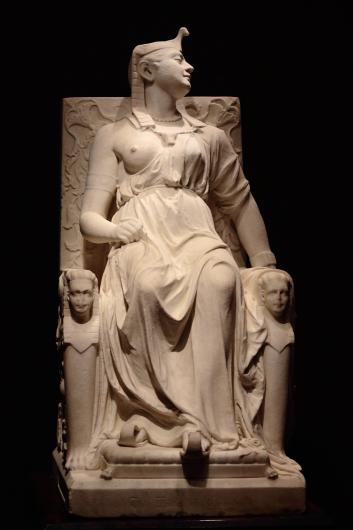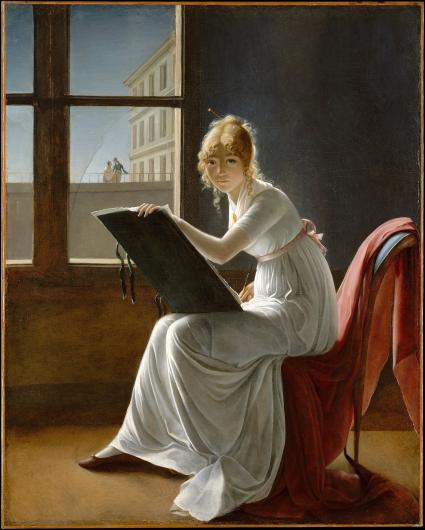
Marie-Denise Villers, Young Woman Drawing, 1801.
Neoclassicism, a Western cultural movement that spanned from approximately 1750 to 1850, impacted painting, sculpture, architecture, and culture in general well into the twentieth century. Coinciding with the rediscovery of the ancient Roman cities of Pompeii and Herculaneum, Neoclassicism was influenced by the writings of archeologist Johann Joachim Winckelmann, who considered Greek and Roman art the apex of perfection.
Focused on simplicity and symmetry—principles valued by classical artists, Neoclassicism was an antidote to Rococo and Baroque excess. Neoclassicists painted everything from ancient myths to contemporary events, portraying their subjects through the heroic lens of a classical style.




